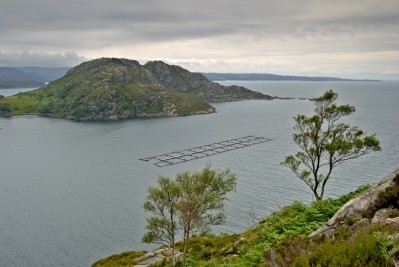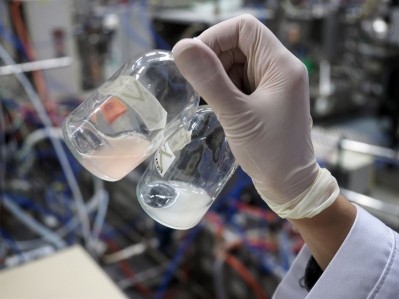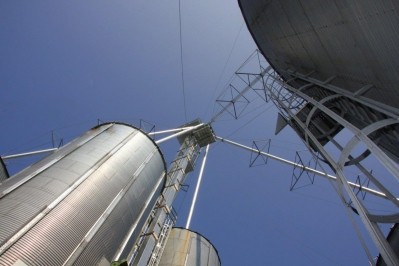Dispatches from EuroTier 2016
Feed climbs up the rankings at Roquette

“Ten years ago, food was first in terms of contribution to income, followed by paper, pharma and then feed; that has changed [considerably], so that, today, feed has edged upwards and is second after food (which takes up 45%) in the Roquette [hierarchy] in terms of turnover,” Christian Delporte, technical support and development manager, animal nutrition at the French company, told us at EuroTier in Hannover.
Roquette is “expanding” in all segments from food to pharma to feed ingredients, he said.
“We are producing more and more feed materials. A percentage of our feed materials, not all, are coproducts so as we generate more starch, dextrose, and sorbitol, as we process more wheat, more corn, more potato, and more pea ingredients, we generate feed materials,” said Delporte.
The company is focusing on both young animals such as veal calves and piglets in terms of its specialized nutrition products, using "well refined, easily digestible" raw materials, and it also produces commodities, bulk materials for other life stages in dairy, pigs and poultry, he said.
The supplier’s infrastructural set up, with large plants in strategic locations close to key ports, allowing bulk transportation to the large European livestock feed markets, brings “added value” for feed buyers, said Delporte. “Of the 140m tons of compound feed produced in Europe [on an annual basis], we deliver 2m tons of that; we are not obliged to export overseas, the European market is mature but is able to absorb all of the Roquette produce,” he said.
In terms of number of customers, it sees a decline due to greater amalgamation. But the increase in scale is not negative for Roquette, he said. “We are happy with that [consolidation trend]. It increases the pressure, you need to be more professional but, we have a small animal nutrition team, so [a model] involving larger, more international but fewer compound feed companies suits us. We have an electronic invoice system which makes the payment process more efficient, and [the larger the company, the quicker it] will use this electronic exchange [platform]," he explained.
Feed protein development
Delporte said aqua feed and pet feed are the sectors where the most growth is in terms of the animal nutrition market.
Its wheat gluten protein product, Vital, for fish feed and pet food use is a co-product that is generated from ethanol production. “We see growing demand for wheat gluten protein from salmon producers in Norway and Scotland as an alternative to fishmeal. The product is efficient, non GM, and European produced,” said Delporte.
“We also had great success with our hydrolysed wheat protein product as a milk replacer substitute for veal calves; it is soluble, and retains the nutritional qualities of the protein,” he added.
Its ethanol production at its plant in Beinheim in Alsace in France also results in an additional co-product for the feed sector, which he said is similar to DDGS but “more digestible” than standard DDGS due to the technology employed.
In terms of feed industry use, its pea protein is taken up only in small volumes, in highly specialized segments such as juvenile fish diets or, again, pet food, said Delporte.
Its potato protein is produced for animal feed. “It is not used in food. The amino acid profile of our Tubermine product makes it really suitable for piglet diets, it is digestible and is non-GM,” he continued.
Delporte said the organic sector is also proving to be a growing market for Tubermine, and, despite it not being an organic product, it is produced without chemical solvents. “Through Starch Europe, we are actively arguing the derogation that organic feed can use 5% non-organic ingredients, should continue after December 2017, [as it is] the more sustainable approach,” he said.
Its Germex cake expeller, which is a protein source but not in a highly concentrated form, is used in the layer sector and also by beef cattle producers as a source of energy, said Delporte.
“We produce Germex in Italy, in Spain and in the north of France. Italy is a strong market; the cake expeller is used in the feed of dairy cows that supply the milk for parmigiano-reggiano cheese production,” he added.
Energy efficiency
Protein and starch refinery uses a lot of water. “When you have water, you generate wet co-product. You could decide to invest in a drier to produce pellets or you could decide to deliver the product to the market wet, particularly if you have a local livestock market well set up to receive wet products. You must get the balance right; if you transport liquid products long distances, you [lose out] on the energy efficiency gained from not drying the product,” said Delporte.
In the UK, around its Corby wheat starch plant, Roquette targets local pig producers with a wet co-product from that facility: “We have decided not to dry the co-product. It is delivered in a liquid form because there are enough pig farmers located 200km around our Corby plant to absorb all the volume,” he explained.
Producers in the north of France and the Netherlands use a lot of wet products as well, said Delporte.













